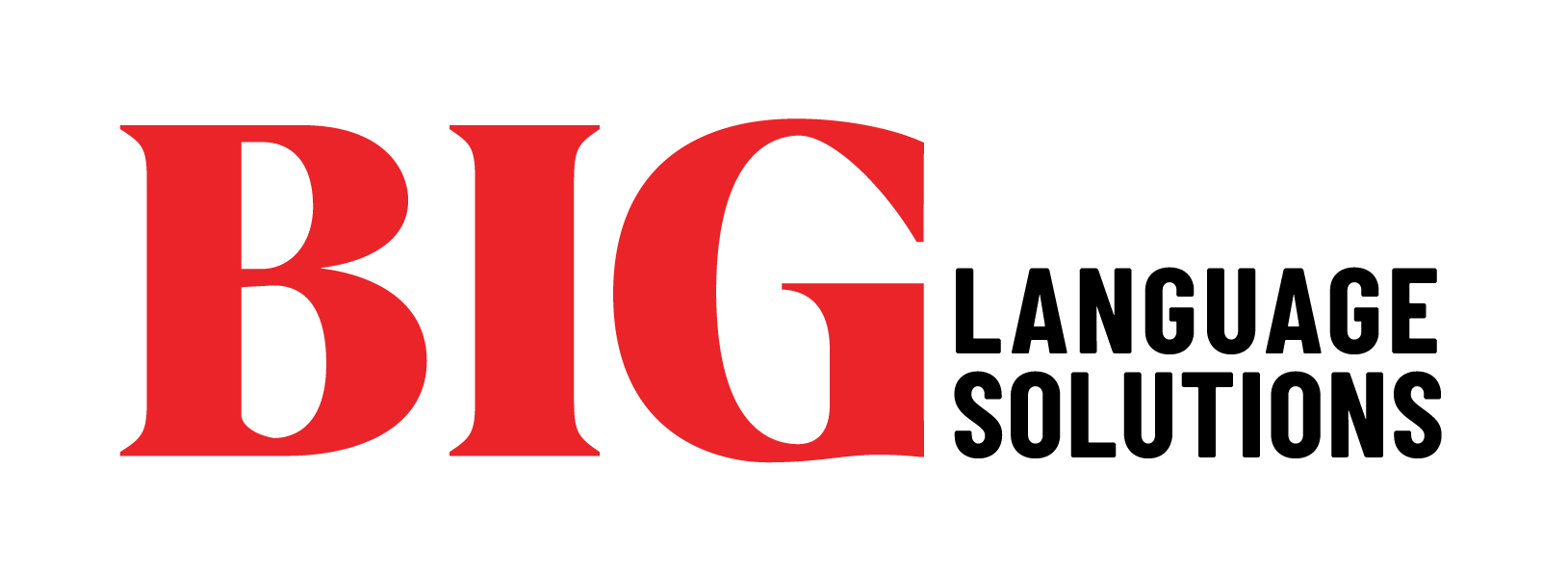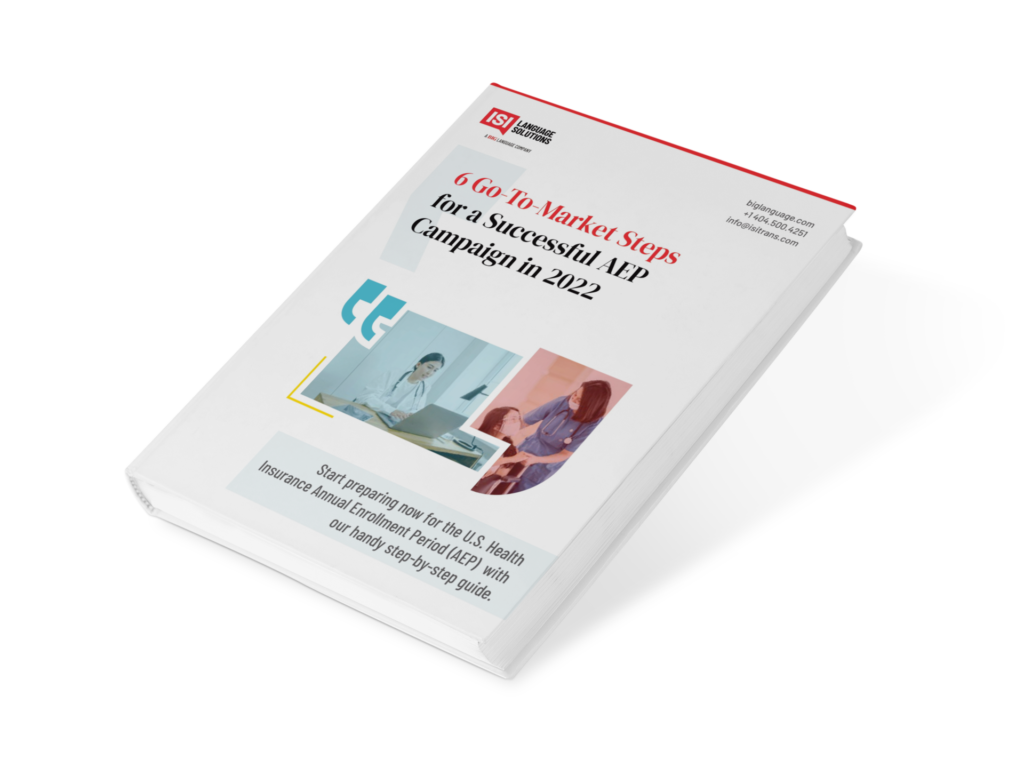Need to translate your healthcare website? There are several advantages to hiring a language service company (LSC) to translate your healthcare website into the languages that your patients speak. These include: increased productivity with medical staff, new patient acquisition, improving patient outcomes and an improved patient experience.
A language service company typically offers some combination of translation, localization and interpretation services. They help healthcare providers translate the content of their websites into the languages spoken by the diverse populations in their areas. A quality language service company will have translators and interpreters on staff who have expertise in the healthcare field. The most qualified companies will come with a wealth of previous experience helping healthcare providers navigate the constantly changing rules and regulations of language accessibility in their industry. Additionally, they’ll have experience or certifications in the medical field, which will enable them to further delve into your translation projects to fully enhance your patient experience.
Here is a breakdown of the top reasons why you need to engage a language translation company to translate your healthcare website:
1) It’s the Law to Translate Your Healthcare Website
Healthcare providers such as hospitals and insurance companies are legally obligated to offer language services for individuals with Limited English Proficiency (LEP) in their native language. Under Title VI of the Civil Rights Act of 1964, discrimination on the basis of race, color or national origin is prohibited. Therefore, health care providers that receive federal funding, including Medicare, Medicaid and SCHIP (State Children’s Health Insurance Program), are required to provide language access services for their patients.1
Additionally, some states require providers to have their medical materials available in a number of languages. Please refer to your local authority in your state for specifics, and to learn which languages are required by law to be available on your website. You’ll want to engage the translation services of a language service company early on in your planning process. They’ll have translators on staff that are experts in the healthcare field. Additionally, they’ll hold various certifications in the industry, and will be knowledgeable about helping you reach compliance.
Who is considered a Health Care Provider?
According to UC Berkley, citing federal regulations, “a healthcare provider” is defined as “a doctor of medicine or osteopathy, podiatrist, dentist, chiropractor, clinical psychologist, optometrist, nurse practitioner, nurse-midwife, or a clinical social worker who is authorized to practice by the State and performing within the scope of their practice as defined by State law, or a Christian Science practitioner”.2
As regulations for healthcare providers are routinely updated, patient-facing materials are required to be updated as well, and distributed to patients in a language they can understand. If you are in charge of a healthcare provider website operating in the U.S., you will want to make sure your website, which is one of your most visible communications, is compliant with all applicable laws.
2) Increases Productivity for Medical Staff
A healthcare provider’s website is usually the first point of contact that a patient accesses, and it is essential that the information is translated as accurately as possible. Translating your website in conjunction with utilizing interpretation services can reduce the time medical staff spend engaged in tasks outside direct patient care.
Rather than spending time trying to explain hospital policies to people with limited proficiency in English, medical staff can concentrate on the other duties of their job in order to work more efficiently. Undistracted medical staff means all patients experience care more promptly.
A quality language service company with experience in healthcare will offer both translation and interpretation services for in your industry. They’ll have a number of solutions, bundled or a la carte, which are designed to help your healthcare organization better serve patients of all languages.
3) It Improves Patient Experience
Healthcare websites are often used by people in distress. That’s why it’s important that users of all languages can accomplish three tasks easily:
1) Find the right health provider or service to get treatment
2) Retrieve medical records, such as test results and other health information
3) Pay their bills
In healthcare, translation services are essential for providing accurate and competent care. When you engage the services of a translation company you’ll find additional opportunities to serve patients with limited English proficiency. Items that providers will want to consider translating to improve the patient experience include:
• Patient surveys and diaries
• Treatment instructions
• Informed Consent Forms (ICFs)
• Patient Reported Outcomes Forms (PROs)
• Case Report Forms (CRFs)
• IRC/IEC documentation
• Discharge summaries
• Hospital records
• Medical history reports
• Patient information
• Health information brochures
• Medication labels and inserts
• Pharmacy materials
• Data sheets
• Drug packaging and labeling
• Clinical trials and protocols
• Physical examination reports
• CRA training materials and videos
With these additional opportunities to improve your overall patient experience, you will be delving into sensitive patient data. Therefore you will want to engage a language service company that is HIPAA and HITECH compliant.
• HIPAA Compliant – Companies that deal with protected health information (PHI) must have physical, network, and process security measures in place and follow them to ensure HIPAA (The Health Insurance Portability and Accountability Act ) compliance. HIPAA sets the standard for sensitive patient data protection.
• HITECH Compliant – The Health Information Technology for Economic and Clinical Health Act (HITECH Act) mandates audits of health care providers to investigate and determine if they are in compliance with the HIPAA Privacy Rule (effective in 2003) and Security Rule (effective in 2005).
An experienced language service company will hold HIPPA and HITECH certifications. Make sure to request proof of these credentials when engaging their language translation services.
4) Helps You Acquire New Patients
According to the U.S. Census Bureau in 2015, more than 60 million individuals — about 19% of Americans — reported speaking a language other than English at home, and more than 25 million said that they speak English “less than very well.”3 And because of the strong link between providing content in your customers’ native languages and the likelihood of that consumer making a purchase, you will be in a better position to attract new patients if you translate your website and associated materials. Data on the subject found the following:
• 72.4% of consumers said they would be more likely to buy a product with information in their own language4
• 72.1% of consumers spend most or all of their time on websites in their own language5
• 56.2% of consumers said that the ability to obtain information in their own language is more important than price6
If one of your goals as a healthcare provider is to acquire new patients to grow your practice, then it makes sense to translate your healthcare website into new languages which will help attract new patients within the community you serve.
5) Improved Patient Health Outcomes
When a healthcare provider better serves patients with limited English proficiency – through the use of translation and interpretation solutions – it can deliver improved patient health outcomes. Patients with limited English proficiency are much more likely to have adverse effects from drug complications, poor understanding of diagnoses, low health literacy, and a greater risk of being misunderstood by their physicians.7,8 With a website being one of the most visible patient communications tools that a provider has, making sure that it is accurately translated into different languages will ensure improved outcomes. When you combine translation with interpretation services via a quality language service company, you’ll undoubtedly improve patient health outcomes.
Want to learn how to get more organic traffic to your translated website? Then you’ll want to read our article on How to Implement Multilingual SEO with Language Translation Services.
References
1 “Title VI of the Civil Rights Act of 1964; Policy Guidance on the Prohibition Against National Origin Discrimination As It Affects Persons With Limited English Proficiency,” Federal Register, August 20, 2000 accessed June 20, 2019, https://www.federalregister.gov/documents/2000/08/30/00-22140/title-vi-of-the-civil-rights-act-of-1964-policy-guidance-on-the-prohibition-against-national-origin.
2 “Who is considered a Health Care Provider/Practitioner?,” UC Berkeley Human Resources, accessed June 28, 2019, https://hr.berkeley.edu/node/3777.
3 “Detailed Languages Spoken at Home and Ability to Speak English for the Population 5 years and Over: 2009–2013,”October 28, 2015 accessed June 28, 2019, http://www.census.gov/data/tables/2013/demo/2009-2013-lang-tables.html.
4 Nataly Kelly, “72.4% of consumers said they would be more likely to buy a product with information in their own language,” last modified August 3, 2012, https://hbr.org/2012/08/speak-to-global-customers-in-t
5 Nataly Kelly, “72.1% of consumers spend most or all of their time on websites in their own language,” last modified August 3, 2012, https://hbr.org/2012/08/speak-to-global-customers-in-t
6 Nataly Kelly, “56.2% of consumers said that the ability to obtain information in their own language is more important than price,” last modified August 3, 2012, https://hbr.org/2012/08/speak-to-global-customers-in-t
7 Gandhi TK, Burstin HR, Cook EF, et al. Drug complications in outpatients. J Gen Intern Med. 2000;15(3):149–154.
8 Karliner LS, Jacobs EA, Chen AH, Mutha S. Do professional interpreters improve clinical care for patients with limited English proficiency? A systematic review of the literature. Health Serv Res. 2007;42(2):727–754.








